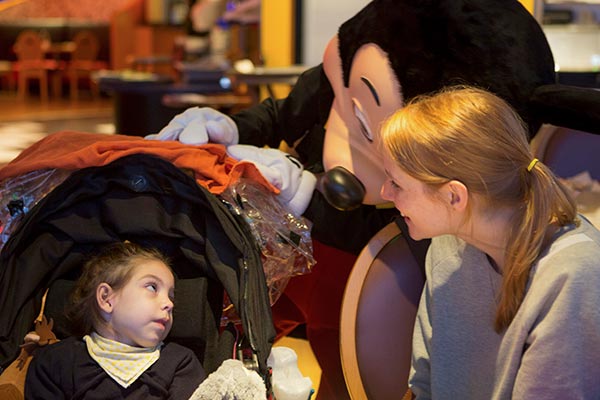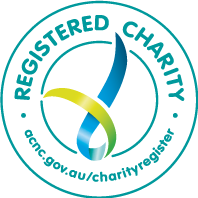Tay-Sachs and Sandhoff Diseases – A practical guide for Families and Carers
About the guide
As Tay-Sachs and Sandhoff diseases are so rare, there is limited high-quality information available publicly, particularly information specific to the Australian context. We have tried to overcome this by developing a free information guide and have obtained the information from a number of reliable sources, including experts in medical and allied health care, and in social support.
We hope that you can find the information you need here, and we strongly encourage you to contact Rare Find Foundation and your care and support team for any further questions you may have.
The information in the guide (available in hard copy via request and also presented throughout this website) has been developed with the experience of families and carers in mind. Rare Find Foundation has aimed to be inclusive of the many different disease presentations, family arrangements and potential audiences of this Guide.
You will notice that we often refer to “your child or loved one”. In doing so, we acknowledge that many different people may care for and support an individual with Tay-Sachs or Sandhoff diseases, not just their parents.
What is included in the Guide?
The guide consists of six booklets:
- Introduction: Outlining information about Rare Find Foundation and providing the context to support the other booklets
- Tay-Sachs and Sandhoff diseases: Providing information about the diseases, including causes, symptoms, diagnosis and prognosis
- Receiving a diagnosis: Offering an insight into the Australian health care and social support context, an overview of what your journey might look like, and information to support you and your family working together
- Caring for your child or loved one: Exploring physical care for your child or loved one, as well as feeding, communication and play
- Palliative care and end-of-life care: Delving into this valuable type of care, explaining how it can support your family, and also touching on the passing of your loved one
- Glossary: Providing explanations of the many terms that you will come across in your journey
These booklets are intentionally separate, to support flexible use. For example:
- When your child or loved one first receives a diagnosis, you may wish to understand more about the diagnostic journey (Booklet 3), but not feel ready to explore the different ways you can care for your child or loved one on a day-to-day basis (Booklet 4)
- You may wish to provide your family doctor, or General Practitioner (GP), with a copy of Booklet 2 so that they are able to better understand the diseases and provide tailored care, or to show your National Disability Insurance Scheme (NDIS) Local Area Coordinator (LAC) Booklet 4 at your first appointment, so that they can develop an understanding of the equipment and modification needs your child or loved one may have in the coming months
- You might like to provide Booklet 4 to your older child so that they can develop an understanding of what they can do to support communication and play, but not provide them with Booklet 5 until you’ve had time to prepare for a conversation about the passing of their sibling. You may wish to seek advice from your Palliative Care Team on the timing of this.
A note about Booklet 5: Palliative care and end-of-life care
It is likely that your child or loved one will receive a referral to palliative care early on in their journey. It may even be made at the same time you receive your diagnosis, and this will undoubtedly be confronting.
We have ensured that palliative care and end-of-life care information in particular, are separate from the other information in this Guide.
This will allow you and other members of your care and support network to explore these issues at the time that you and they feel is best. In your own time.
Having said that, my family found early involvement with a palliative care team wonderfully supportive and comforting. The palliative care model is built on continuity. This meant that over time, strong and meaningful relationships developed between our palliative care team, our son Sebby, and my husband and I.
I also wanted to take this opportunity to encourage you to think about whether creating special memories with, and lasting keepsakes of your child or loved one, is something that you may find great solace in once they have passed. If it is, it is never too early to begin doing so. Booking in a family getaway to a respite holiday home, or engaging in wonderful sensory experiences (both discussed in this Guide) can create beautiful family memories. You may also wish to have professional photos taken, make voice recordings, or take ‘inkless prints’ or plaster casts of your child or loved ones’ hands and feet. Please do not hesitate to ask me, or one of the families in our network, for ideas on ways that you can capture moments you can treasure forever.
Anna Pak Poy
Chairperson

Acknowledgements
The Guide was developed with the help of parents and carers of individuals affected by Tay-Sachs and Sandhoff diseases, as well as medical and allied health professionals. Other Tay-Sachs and Sandhoff disease support organisations have also made valuable contributions. As Chairperson of Rare Find Foundation, I would like to extend a sincere thank you to all of the individuals, families and organisations who contributed to this Guide, including:
Rare Find Foundation Board Members
- Dr. Nicholas Smith, Department of Neurology and Clinical Neurophysiology, Women’s and Children’s Health Network and Discipline of Paediatrics, University of Adelaide, Australia
- Kate Ellis
- Olivia Nassaris, Treasurer
- Adam Carpenter
- Tim Watts
Rare Find Foundation Patron
Senator Marielle Smith, Senator for South Australia
As well as
- Kathryn Milne (Rare Insight)
- Silvia Josipovic
- Katie Hawtin
- Toolbox Graphic Design
- Cure & Action for Tay-Sachs (CATS) Foundation, United Kingdom
- Sara Fleming, Clinical Service Director, Paediatric Palliative Care (Women’s and Children’s Health Network)
- Dr Mary Cossich, Medical Consultant, Paediatric Palliative Care (Women’s and Children’s Health Network)
- Susie Pryce-Hewitt, Physiotherapist
- Fiona Fallo, Clinical Psychologist (Barrett House)
- Leesa Stanley, Registered Nurse
- European Tay-Sachs and Sandhoff Charity Consortium (ETSCC)
- Nimblebiz Solutions
- Ayers House
I would also like to acknowledge the Cure & Action for Tay-Sachs (CATS) Foundation in the United Kingdom, whose support and information helped inspire this Guide, and whose guidance throughout our own journey is truly appreciated.
Importantly, we would also like to thank the families in our Rare Find Foundation community, who have shared their experiences, stories and advice with open hearts, generosity and care.
To our darling children, who taught and guided us, have given us centuries of love and memories in a lifetime too short and who we treasure, now and always.
Anna Pak Poy
Chairperson
